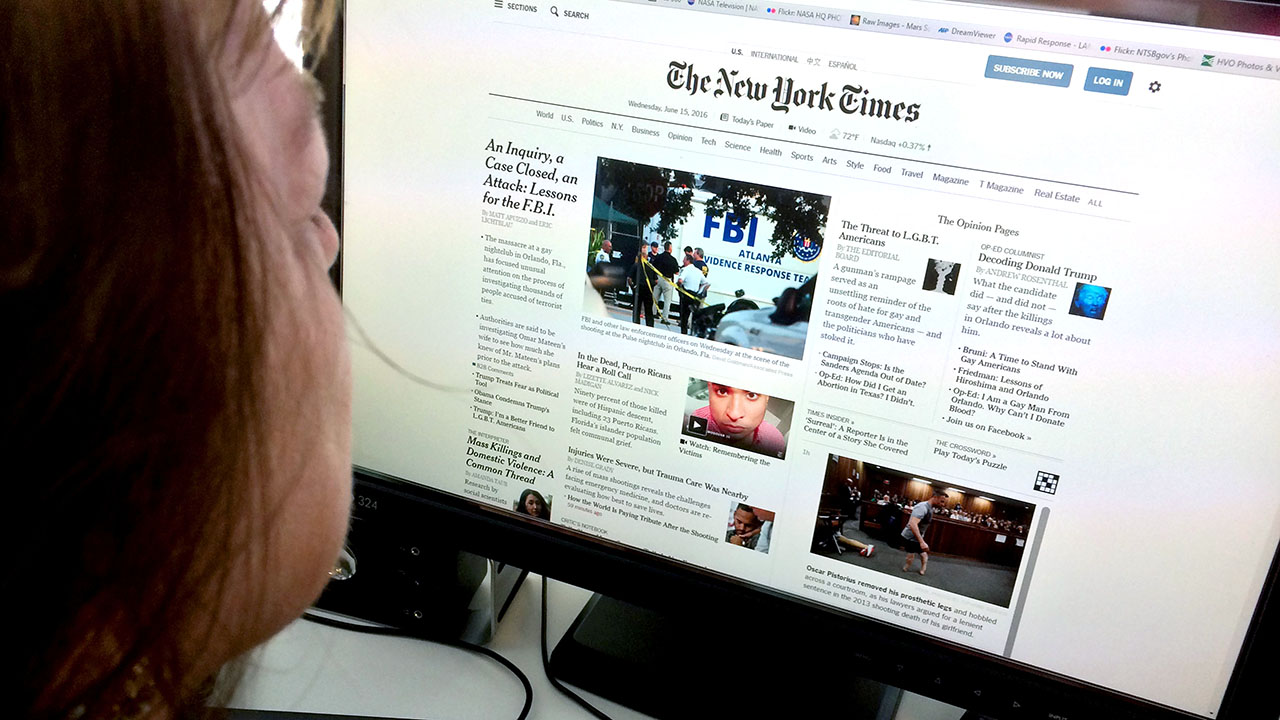Comprehensive Globe News Insurance Coverage with DW News Daily
Comprehensive Globe News Insurance Coverage with DW News Daily
Blog Article
The Advancement of Journalism in the Age of News Online
In the rapidly transforming landscape of journalism, the digital age has actually ushered in a brand-new era where the immediacy of on-line news improves both its development and consumption. As electronic platforms multiply, they enhance interactivity and expand the reach of journalism, yet at the same time test conventional standards with the swift spread of details and misinformation alike. The increase of person journalists and independent voices better complicates the story, contributing to a vivid yet perilous media environment. As we browse these complexities, one have to wonder regarding the future of journalistic honesty and how it can be secured amidst these transformative changes.

Increase of Digital News Operatings Systems
The surge of digital information platforms has basically transformed the landscape of journalism, noting a shift from conventional print media to dynamic, on-line areas. This evolution was propelled by improvements in technology and the enhancing access of the internet, which permitted information to be distributed rapidly and extensively. Unlike their print equivalents, electronic platforms can promptly update material, supplying real-time information coverage and analysis that interest the modern-day viewers's demand for immediacy and significance.
Digital systems have actually additionally widened the range of journalism, making it possible for a diversity of voices and perspectives. With lower barriers to entrance, independent reporters and smaller sized news organizations can reach international target markets, testing the monopoly when held by developed media empires. This democratization of information has actually improved the general public discourse, offering varied narratives and dealing with particular niche interests that were previously underserved.
Furthermore, the combination of multimedia aspects such as video, audio, and interactive graphics enhances storytelling, making news more accessible and appealing (dw news). This multimedia come close to not just brings in a wider audience however also aids in the understanding of intricate stories. In significance, digital platforms have redefined journalism, promoting advancement and adaptability in an ever-evolving media environment

Impact of Social Media
Social network platforms have even more revolutionized journalism by changing just how information is consumed and shared. These platforms have equalized information circulation, allowing anyone with internet accessibility to report occasions in real-time. This immediacy has actually put typical information electrical outlets in a race to maintain, engaging them to embrace quicker reporting techniques. Furthermore, social networks has expanded target markets, approving journalists access to global viewership past geographical restraints.

The interactive nature of social media sites cultivates involvement, enabling audiences to get involved in conversations, share opinions, and add to news narratives. This communication enhances the vibrant between journalists and their target markets, promoting a more participatory kind of journalism. Nevertheless, this also positions enormous stress on journalists to generate material that resonates with target markets, commonly focusing on sensationalism to record focus.
Furthermore, social media systems have come to be important devices for journalists to resource tales, evaluate popular opinion, and connect with sector peers. By keeping track of trending topics and user-generated content, reporters can uncover tales that could otherwise be neglected. Yet, the reliance on social media likewise demands an important evaluation of sources to make certain the trustworthiness of details shared. In this developing landscape, versatility continues to be essential for journalists to grow.
Challenges of Misinformation
In the middle of the electronic change of journalism, one substantial challenge is the prevalent spread of false information. In a period where info is swiftly accessible and home abundant, comparing trustworthy news and fabricated content has actually come to be progressively challenging. The sheer volume of info shared throughout different on-line systems usually blurs the line between reality and fiction, presenting a significant risk to the stability of journalism.
False information can spread out quickly with social media sites, where formulas prioritize interaction over accuracy, accidentally magnifying incorrect stories (dw news). This not only weakens public count on media organizations however likewise cultivates a setting where deceptive content can influence popular opinion and decision-making processes. The challenge for reporters is twofold: to expose frauds effectively and to support strenuous requirements of fact-checking and confirmation
Further complicating this concern is the existence of deepfakes and sophisticated disinformation projects that utilize progressed modern technologies to develop deceptive content tantamount from legitimate reporting. As these innovations advance, so should the approaches and devices utilized by journalists to combat them. Resolving misinformation calls for collaboration between media companies, innovation firms, and policymakers to establish extensive strategies that protect the authenticity of info in the electronic age.
Role of Resident Reporters
Navigating the landscape of false information highlights the transformative influence of citizen reporters within the electronic realm. As typical media outlets face the sheer speed and find out here volume of information circulation online, citizen journalists-- ordinary individuals armed with mobile phones and accessibility to social media-- are playing a significantly pivotal role. These grassroots contributors have actually come to be instrumental in covering events swiftly, commonly giving real-time updates from the ground before mainstream media can respond.
Person reporters have actually democratized news coverage, amplifying voices that might otherwise remain unheard. By leveraging systems like Twitter, Facebook, and Instagram, they use varied viewpoints that test the narratives often pushed by developed media.
However, person journalism is improving the media landscape, compelling traditional outlets to adjust by incorporating user-generated material into their reporting. By cultivating area interaction and encouraging participatory journalism, these digital authors add to a much more dynamic and comprehensive news ecological community. As person journalists remain to advance, their function in shaping public discourse continues to be an essential part of contemporary journalism.

Future of Journalistic Stability
As the electronic age remains to evolve, the future of journalistic stability faces extraordinary difficulties and chances. The expansion of digital platforms has actually equalized info circulation, allowing a larger variety of voices to contribute to the information landscape. Nonetheless, this has actually also led to the spread of false information and the disintegration of rely on media. In this environment, maintaining journalistic honesty comes to be extremely important, calling for adherence to extensive ethical criteria and fact-checking processes.
The surge of man-made intelligence and algorithm-driven web content curation even more makes complex the landscape. While AI can improve coverage by examining large datasets and identifying fads, it also postures risks of prejudice and control. Reporters need to for that reason remain attentive, making sure that technology acts as a device for truth rather than distortion.
Moreover, the financial stress on standard media outlets demand ingenious company models to maintain quality journalism. Subscription-based versions, nonprofit funding, and collaborations with tech firms are becoming potential remedies. Yet, they should be pursued without endangering editorial freedom.
Eventually, the future of journalistic honesty depends upon the dedication of journalists and media companies to copyright openness, accountability, and an unwavering dedication to fact, amidst a swiftly changing electronic world.
Final Thought
The evolution of journalism in the digital age offers both difficulties and possibilities. The increase of electronic news platforms and social media sites has equalized information circulation, encouraging a diverse variety of voices, consisting of resident journalists. Nonetheless, these developments demand vigilant efforts to deal with false information and support journalistic stability. The future of journalism depends upon the ability to adapt ingenious organization models that sustain high quality coverage while maintaining the integrity and trust important for notified public discussion.
The increase of electronic news platforms has essentially transformed the landscape of journalism, marking a shift from typical print media to vibrant, on-line rooms. With reduced obstacles to entrance, independent journalists and smaller information organizations can get to worldwide target markets, challenging the syndicate when held by established media corporations.Social media platforms have actually further reinvented journalism by altering click resources just how news is taken in and shared. As traditional media electrical outlets grapple with the large speed and quantity of news circulation online, person reporters-- average people armed with smartphones and accessibility to social media-- are playing a significantly essential function. The rise of electronic information platforms and social media has equalized info dissemination, encouraging a varied selection of voices, consisting of citizen reporters.
Report this page